

This is the final post in a blog series on the SoR 90-Minute Literacy Block. It focuses on whole group language comprehension instruction for kindergarten, first and second-grade students. In it, I identify which skills you should teach during your language comprehension instruction and offer suggestions for activities you can do to teach those skills.
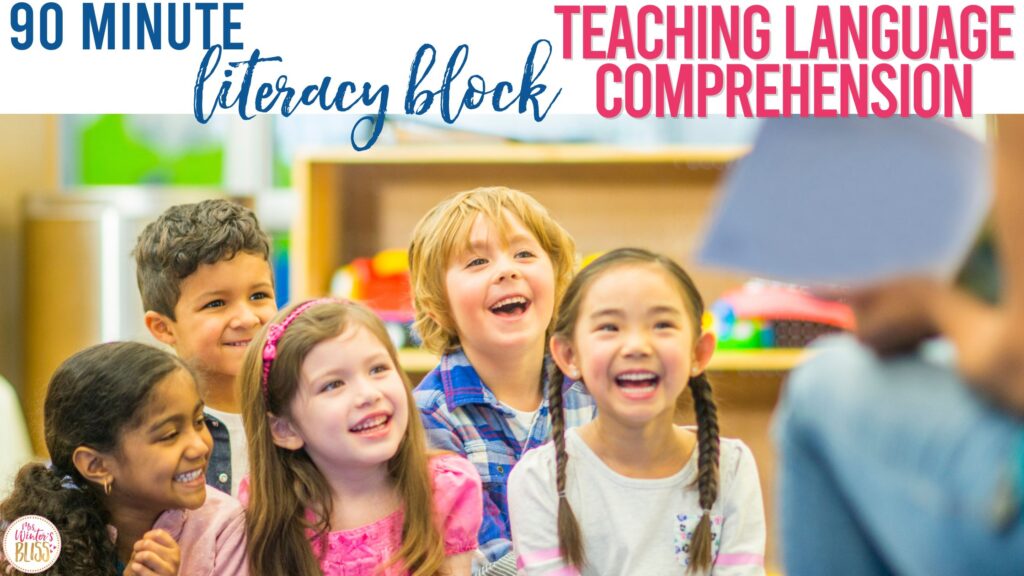
If you teach K-2 students, you are likely familiar with Scarborough’s Reading Rope. It is a model that shows how the different “strands” of reading are all interconnected, yet independent of one another. It contains two main sections: Word Recognition and Language Comprehension which each comprises of several smaller strands. When all of the parts intertwine, it results in skilled and accurate, fluent reading with strong comprehension. But if just one strand is weak, it affects the rope (and the reader) as a whole.
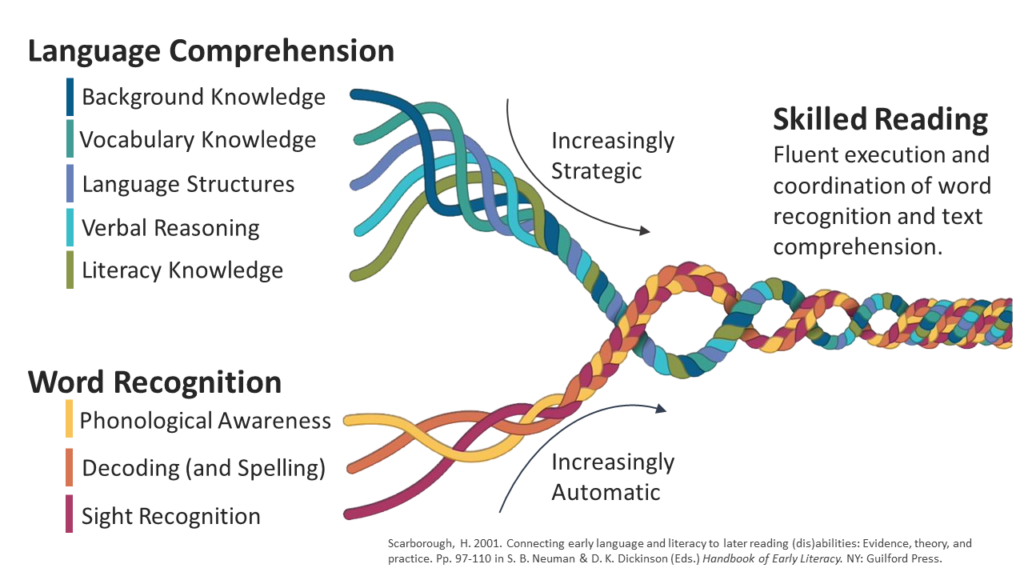
In earlier posts in this blog series on the 90-minute literacy block, I focused on the word recognition part of the rope. I explained how to provide small group and whole group word recognition instruction during your literacy block. I identified specific skills to teach and offered you Science of Reading-aligned word recognition resources to help you do so.
Today, I am excited to move on to the part of the reading rope that focuses on Language Comprehension. I will identify which skills you should teach during your language comprehension instruction and offer suggestions for activities you can do to teach those skills.
What is Language Comprehension Instruction?
For the final 20 minutes of the 90-min literacy block, bring the students back to the meeting area and focus your instruction on language comprehension. Language comprehension is the ability to understand the different elements of spoken or written language, like the meaning of words and how words are put together to form sentences. There are a number of subcomponents to language comprehension. They are:
-Background Knowledge
-Vocabulary
-Language Structures
-Verbal Reasoning
-Literary Knowledge
We must provide explicit instruction in each of these subcomponents throughout the week. They can be taught through your read-aloud, choral or shared reading, or direct instruction.
So let’s take a closer look at each of them…
Building Language Comprehension Through Background Knowledge
Plenty of studies have shown that background knowledge plays an enormous role in reading comprehension. Students rely on background knowledge to make sense of what they are reading and it is particularly important for our students who are still relying heavily on decoding. The more you know about a topic, the easier it is to read a text, understand it, and retain the information.
Here are some simple activities you can do throughout the week to activate and build your students’ background knowledge before a read-aloud:
- Use Preparatory Texts. Providing simpler, preparatory texts in anticipation of a more complex reading task can be very helpful in building background knowledge and reading confidence. Reading a simplified text that addresses topics or themes similar to the ones in the more complex text you’ll be reading aloud, is a simple and engaging way to build background knowledge.
- Use a K-W-L Chart. The tried-and-true K-W-L chart is always an effective way of gauging students’ background knowledge about a topic or concept. Students share what they already know about the topic in the K (What I Know) section and then add questions in the W (What I Want to Know) section. Finally, you can discuss their learnings (as you read and after you read) and add them to the L (What I Learned) section.
- Embrace multimedia. Multimedia can often provide a wealth of information that we wish we could all experience firsthand. It can introduce children to important words and concepts in a highly motivating way and build a shared knowledge base among all of your students.
- Provide Visual Aids. Simply print out images related to the topic you are reading about. You can talk about them, label them, post them and refer to them while reading.

Building Language Comprehension through Vocabulary Instruction
A rich and extensive vocabulary helps students make sense of what they are reading and allows them to enjoy a wider variety of books. As their decoding skills grow, knowing the meaning of words will make it easier for them to read texts with words they have never seen in print. They will spend less effort reading and become more confident readers.
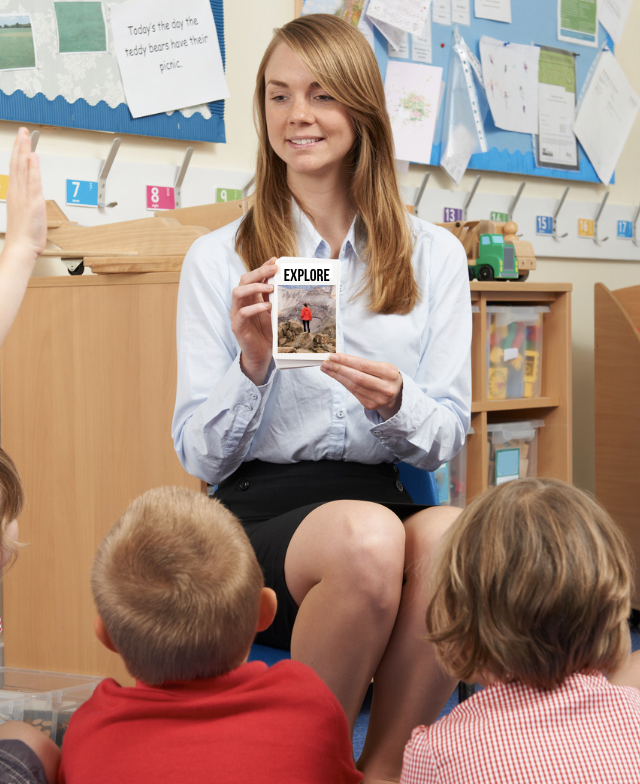
A Vocabulary Instructional Routine
This vocabulary routine is adapted from The Reading Teachers Top Ten Tools course and can be done using vocabulary words you have pulled from your read-aloud.
Step 1: The teacher says the word and students repeat it 3x. This will help build memory for how the word sounds.
Step 2: The teacher writes the word and reads it. The teacher provides a friendly definition and includes the part of speech if appropriate.
Step 3: The teacher uses the word in context (at least 3 different ways). It is helpful to pause and prompt the students to say the word when it comes up in the sentence.
Step 4: Help students to associate the new word with something memorable. They can do this by drawing a quick sketch of something that will help them remember the word, or by using it in a sentence.
Step 5: Students turn and talk to a partner and share sentences that use the new vocabulary word. They can just speak the sentences or write and then share.

Teaching Language Structures
Language structure consists of a complex set of rules and conventions that allow us to communicate with one another verbally and in writing. Students need our explicit instruction on the structure of the English language as they are learning how to read.
The components that go into language structure include syntax and semantics. The syntax is the arrangement of words in a phrase or sentence. Semantics is the meaning of the text. It looks at how words and phrases combine to create meaning and how an author’s word choice affects that meaning.
Teaching Verbal Reasoning
Verbal reasoning refers to understanding when and how words are figurative and when they are literal. When we talk to students about the meaning of words, phrases, tones of voice and even body language, we help them to develop and practice their verbal reasoning skills.
To help your students develop their verbal reasoning skills you can ask questions during your read aloud that require them to make inferences. When they make an inference based on what text says and what they already know, they are using verbal reasoning skills.
Highlight interesting language such as metaphors that you encounter in reading. For example, if the text reads “The beach was a zoo”, stop and discuss that this probably means the beach was very busy that day, not that it was actually like a zoo!
Teaching Literary Knowledge
Literary knowledge gives students an understanding that text is organized in a specific way. This includes things like the fact that we read from left to right and top-to-bottom, and turn the pages from left to right. It is understanding that there is a difference between letters and words, and there are spaces between written words. While these things seem totally obvious to us as adults, they are things that we must explicitly point out and teach to our students.
Students also gain literacy knowledge by being exposed to a wide variety of genres and styles. The more types of reading a child encounters, the more advanced their literacy knowledge becomes.
Give your students plenty of opportunities to discuss what they notice about the way different texts are organized. Model how you use different text features to deepen your understanding.
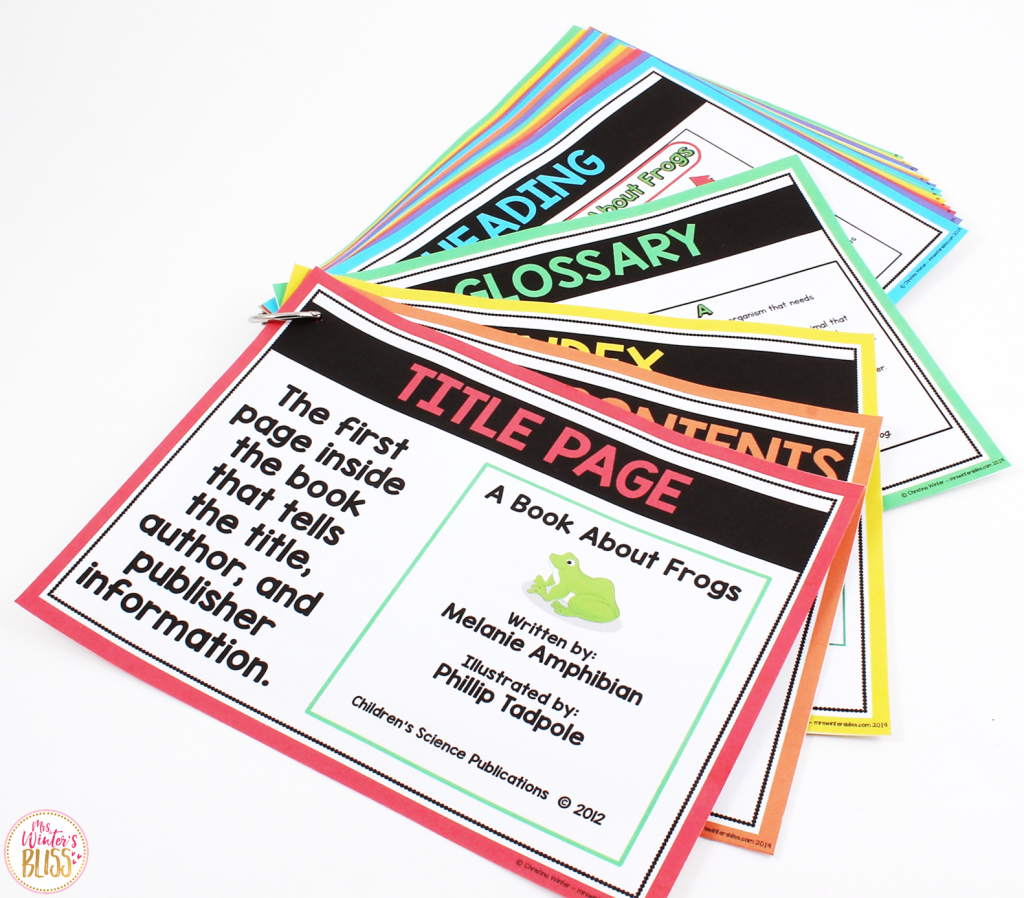
Take a look at this blog post for ideas and activities for your students to distinguish between fiction and non-fiction.
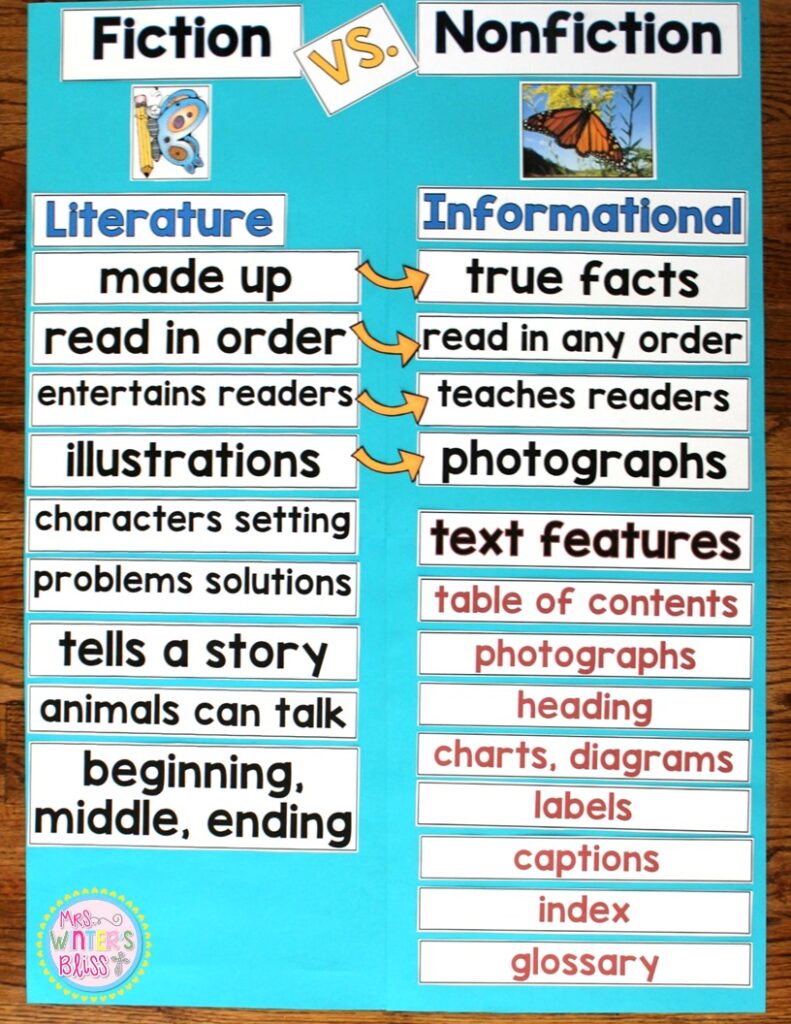
I hope the information I have shared here today and throughout this blog series will bring more effective literacy instruction to your classroom and help you make the most of your 90-minute literacy block!
–PIN for LATER–










